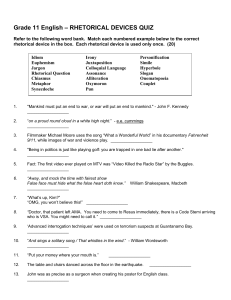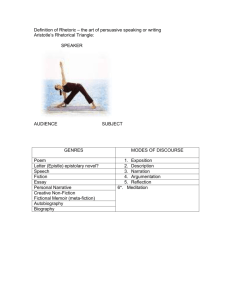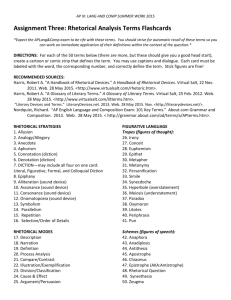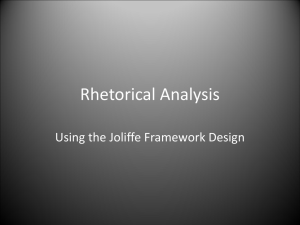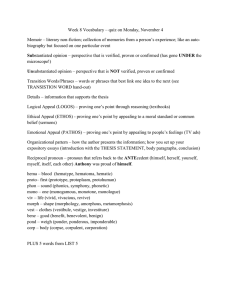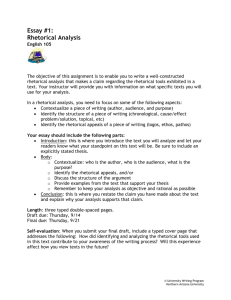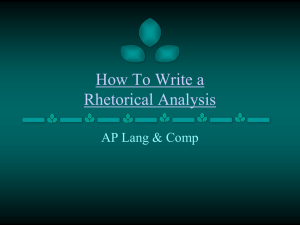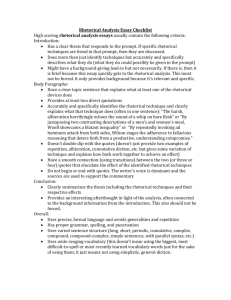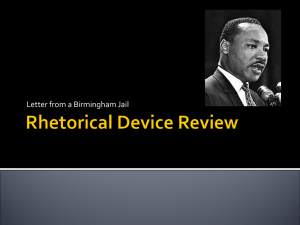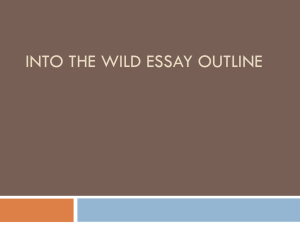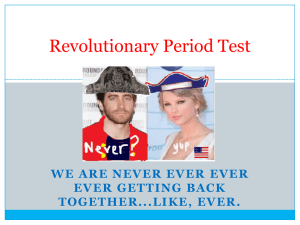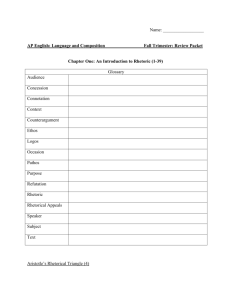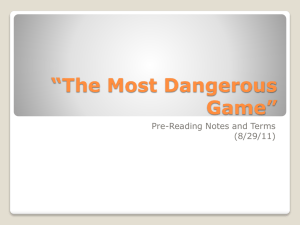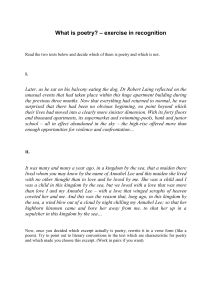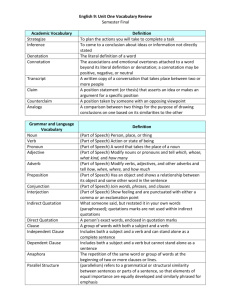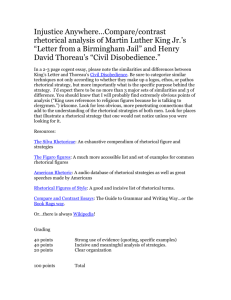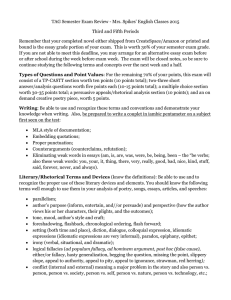The rhetorical web
advertisement
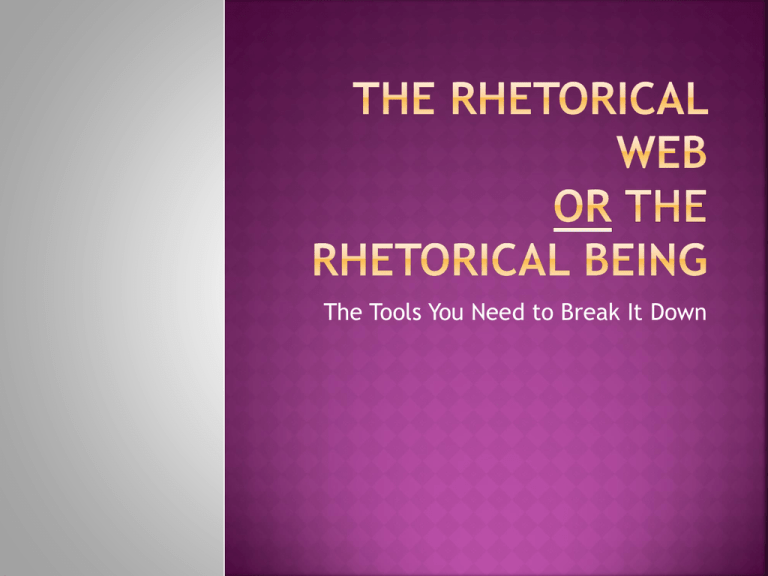
The Tools You Need to Break It Down I can analyze a text using elements of the rhetorical web. RS 1:I can identify the rhetorical situation of a text. The Speaker person presenting the text NOT ALWAYS OBVIOUS Persona – the character the author creates to present the text. Those meant to hear or read the text. Can have major impact on how text is presented. Audience Overall Subject topic of text Often contains an argument, something the author wants to prove or claim The existing situation that creates a need or urgency for a rhetorical response Consider: the occasion, the time and place written Understanding the context is key to understanding the meaning and purpose. The goal that the speaker or writer expects to achieve with the text The intention All aspects of the rhetorical triangle are INTERRELATED. They impact each other. Understanding one is essential to understanding the others. Examples???? ART 1: I can explain logos, pathos, and ethos and how they influence each other. Appeal to reason Logical content: Clear, rational ideas Strong thesis Support of specific details, examples, facts, etc. Counterargument Appeal to emotion Using language that engages the emotions of the audience Strong images Figurative Language Relying exclusively on emotional appeals is rarely effective Appeal to character To demonstrate that one is credible and trustworthy, use: Shared values Knowledge, expertise Sincerity A successful author will use a variety of these appeals, depending on other elements of the rhetorical triangle. Examples: A 1: I can identify the choices an author makes in arrangement. Variety of patterns can be used. Classic: clear beginning, middle, end. Organization and structure can be part of the rhetorical strategy. Ex: putting most important point last or first, depending on the effect you want. Some Types: Chronological Cause & effect Problem – solution Compare/Contrast Description Narration Process analysis– explaining how to do something, presenting steps in order. Illustration – using examples to back up an idea Definition – defining key terms Division & Classification – arranging info. into groups, categories or parts. The nitty gritty The author’s word choices Word choice is directly linked with all other elements of the rhetorical web. Examples of types of diction: Formal or informal Ornate or plain General or specific Two main choices: Imagery & Figurative Language The sensory details used to describe, arouse emotions, or represent abstractions 5 senses Visual Auditory Tactile Gustatory Olfactory One image can represent more than one thing. Writing or speech that is not intended to carry literal meaning and is usually meant to be imaginative and vivid Examples: Metaphors and similes Symbolism Personification Hyperbole The deliberate sentence structure – arrangement of words - the author chooses to make his or her point Consider… Sentence length Number of sentences Sentence beginnings Order of words – subject-verb, or inverted? Important ideas at beginning or end? And more!! Tone: The author’s implied attitude toward his subject and his audience Examples of tone: Playful Sarcastic Somber Tone is created through diction and syntax



